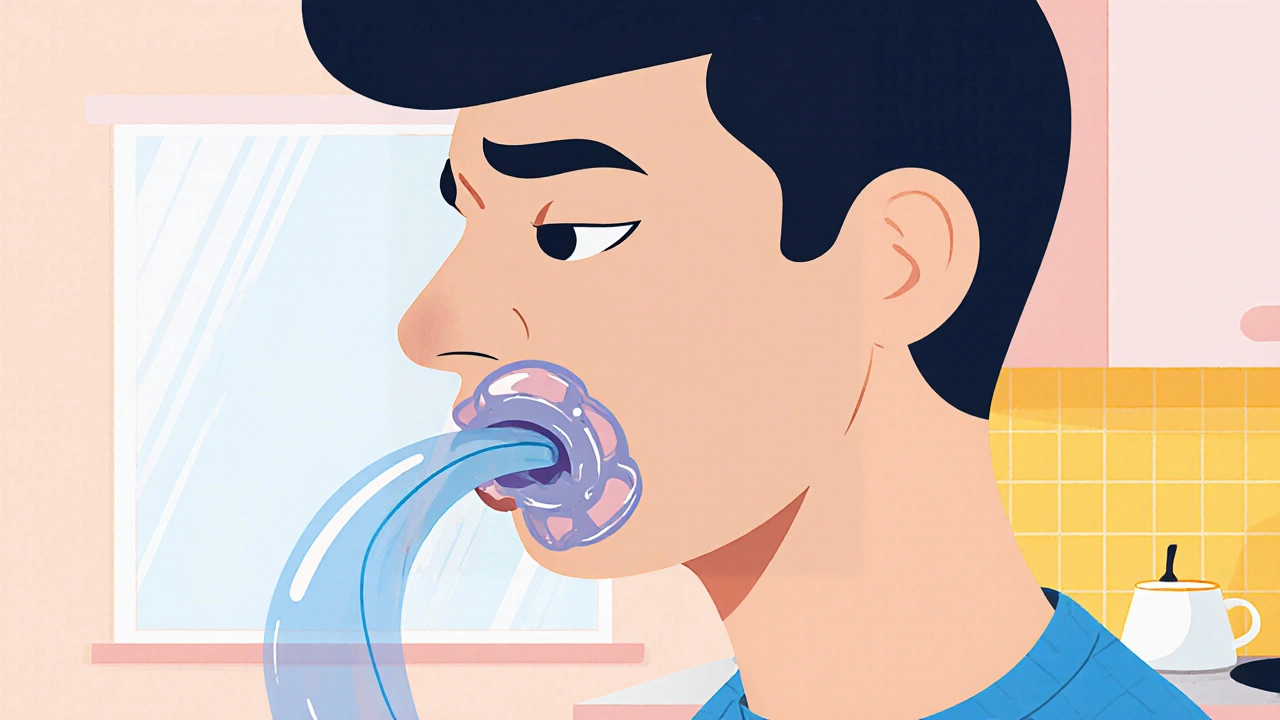Post‑Nasal Drip: Causes, Relief, and When to See a Doctor
When dealing with post-nasal drip, the sensation of mucus flowing down the throat after a cold or allergy flare‑up, you’ll notice it often worsens with allergies, immune reactions to pollen, dust, or pet dander that boost nasal secretions. Also called post‑nasal mucus, it can trigger coughing, sore throat, and disturbed sleep. Understanding the underlying triggers helps you cut the cycle early.
Allergies aren’t the only culprits. Viral infections, sinusitis, and even changes in weather can flood the nasal passages with extra fluid. When the lining swells, the usual drainage route gets blocked, so mucus finds the back of the throat instead. This explains why a simple cold often leaves you hacking at night. Recognizing that a runny nose isn’t always a sign of a serious illness can save you from unnecessary doctor visits.
One tricky part is separating a true disease symptom from a medication side effect. Some antihistamines, blood pressure pills, or antidepressants can dry out nasal tissues, paradoxically prompting the body to produce more mucus. The article “How to Tell If Your Symptoms Are From a Disease or a Drug Side Effect” walks through checklists that let you pinpoint the source. Spotting the difference lets you talk to your pharmacist or prescriber about alternatives before the drip becomes chronic.
Lifestyle habits play a big role, too. Smoking, the inhalation of tobacco smoke that irritates the airway lining directly aggravates post‑nasal drip by inflaming mucosal tissue and thickening secretions. At the same time, poor indoor air quality, the level of pollutants, dust, and humidity inside a home or office can amplify allergic reactions. Simple steps like using HEPA filters, keeping humidity around 40‑50%, and opening windows when pollen counts dip can dramatically cut drip frequency.
For people with chronic respiratory conditions—such as idiopathic pulmonary fibrosis, chronic sinusitis, or long‑standing asthma—post‑nasal drip often becomes a daily nuisance. These conditions share a common thread: they alter the airway’s normal clearance mechanisms, making mucus linger longer. Managing the broader disease with prescribed inhalers, pulmonary rehab, or specialist care usually eases the drip as a side benefit.
Practical relief starts with hydration: drinking water thins mucus, making it easier to swallow. Saline nasal rinses clear out excess fluid and reduce irritants. Over‑the‑counter antihistamines or nasal steroids can target the allergic component, while avoiding known triggers—like smoke or strong perfumes—prevents flare‑ups. If symptoms persist beyond two weeks or are accompanied by fever, facial pain, or blood‑tinged mucus, it’s time to get a professional evaluation.
Below you'll find a curated collection of articles that dive deeper into each of these angles—whether you need to tell a side effect from a symptom, understand how cultural views shape care, or learn specific treatment comparisons. Armed with this background, you’ll be ready to pick the most relevant read and tackle post‑nasal drip head‑on.
Bromhexine: Effective Solution for Post‑Nasal Drip and Persistent Cough

Discover how bromhexine works to thin mucus, relieve post‑nasal drip, and stop persistent coughing, with dosage tips, safety info, and a handy comparison chart.
- October 19 2025
- Tony Newman
- 10 Comments
